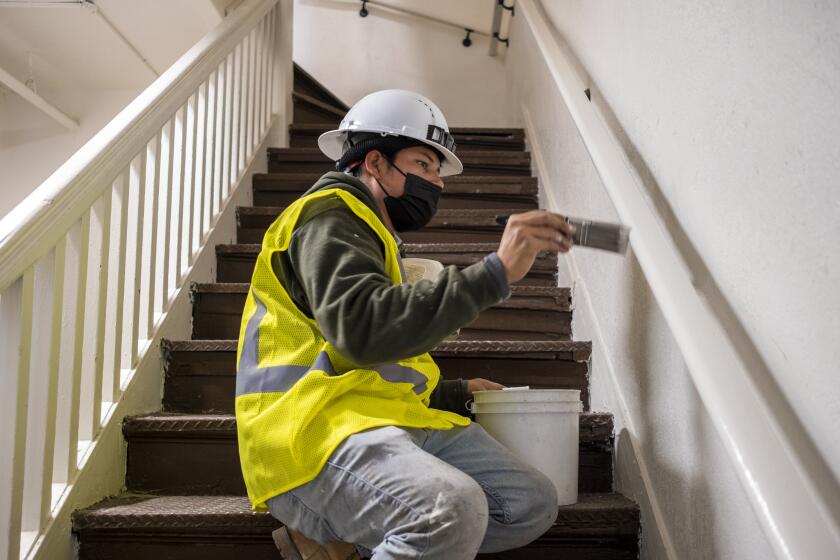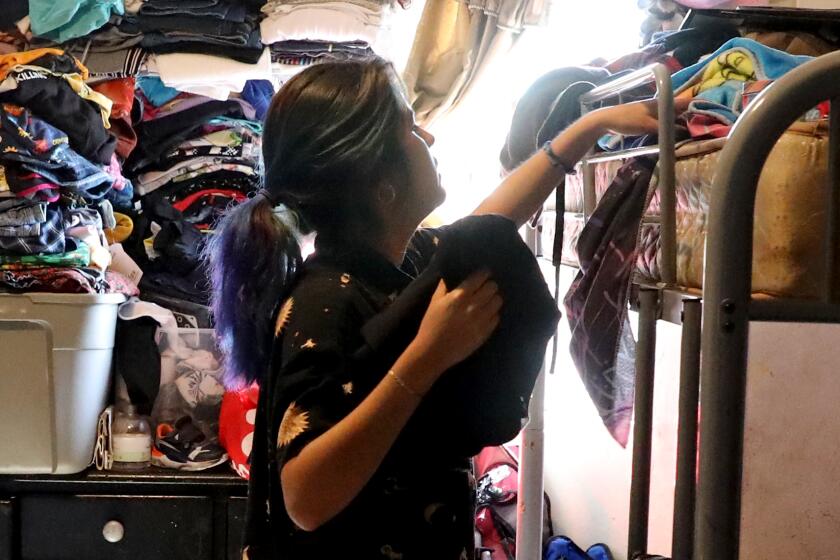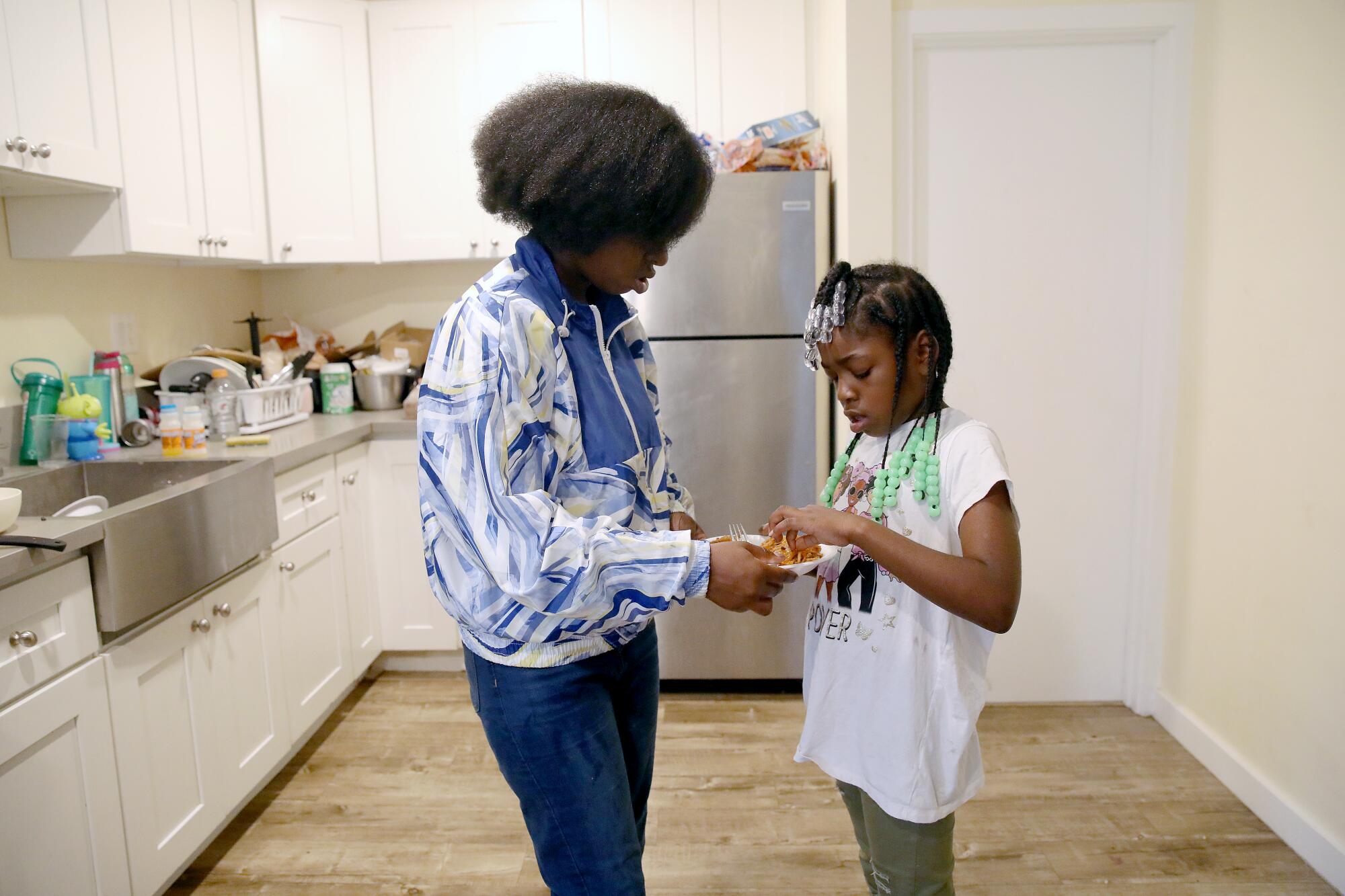
- Share via
The apartment in Inglewood was never such a great deal. So when Courtney Bailey got served a three-day notice, she had already lined up a better place with more space for her kids and a lower rent.
But she was scared. She had no cash for the move-in fees — and was worried she was headed for another bout of homelessness.
Then the new landlord found a solution. She could get an interest-free loan to cover the fees and pay it back when she could, or not at all if she couldn’t.
It sounded like a joke, but it wasn’t. Her landlord connected her to the Short-Term Eviction Prevention Fund, a philanthropic enterprise created by a West Los Angeles software entrepreneur, Adam Miller, to test his theory that non-punitive micro loans could reduce homelessness.
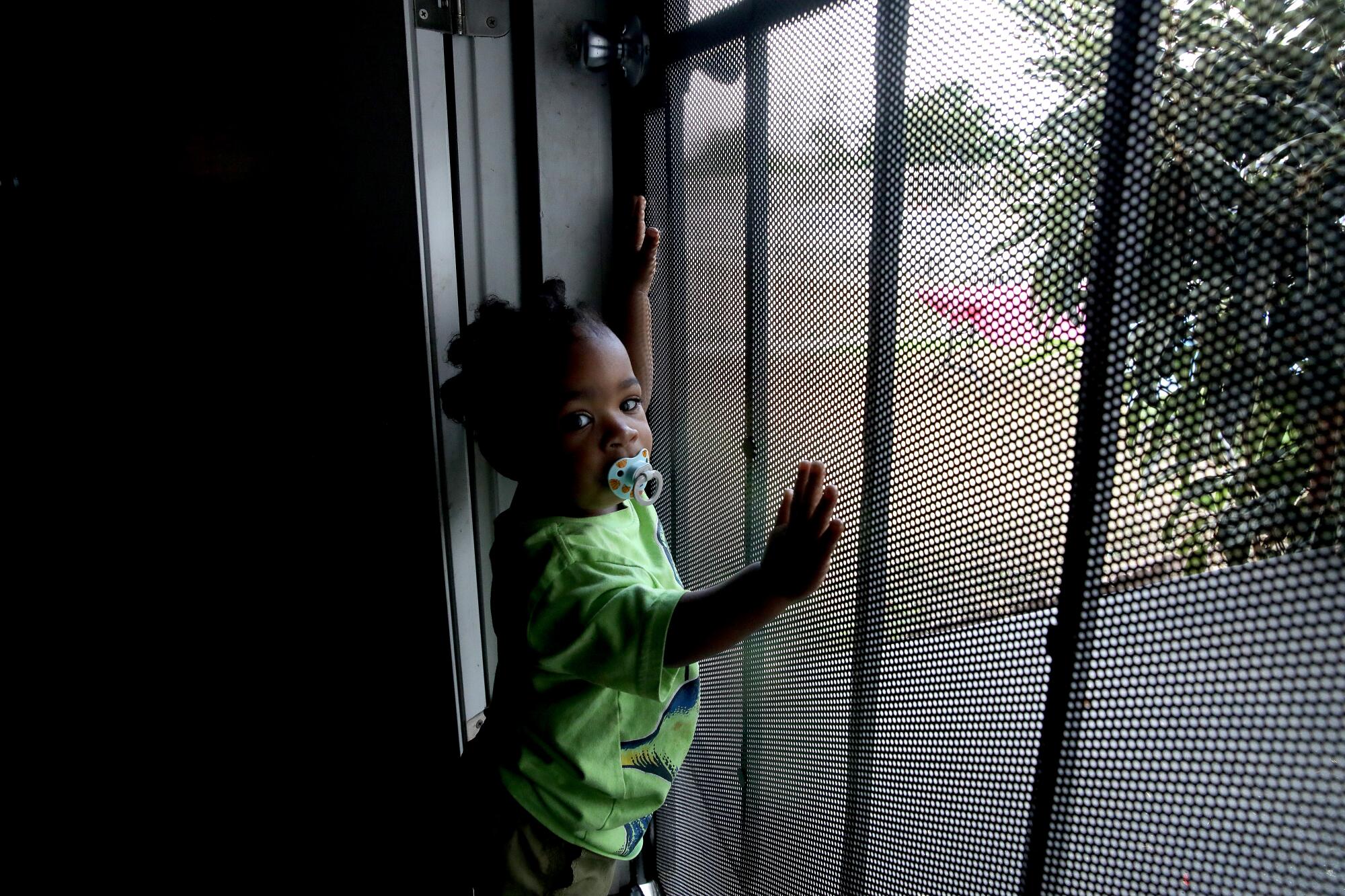
Miller created a $1-million fund to make interest-free loans to people facing imminent eviction. They will have three years to repay, and those who default will be forgiven.
After conducting a small pilot, the fund now aims to give out 1,000 loans of up to $2,500. Reflecting Miller’s background in cloud computing, the data gathered from applications and payment histories are transmitted directly to a poverty researcher at Notre Dame University who is evaluating the effectiveness of the loans.
Early results have been encouraging enough that Miller, who has put tens of millions of dollars into his philanthropic foundation, said he is open to expanding to 10,000 loans.
“If this could really help people from becoming homeless, that is much more cost effective than trying to remediate somebody who has become unhoused,” Miller said.
Miller, who built Cornerstone OnDemand into a global training and development company, created the 1P Foundation (short for One Planet) with his wife Staci to apply their business and research acumen to philanthropy.
“We wanted to do the hard things,” he said in an interview. “We focused on intractable problems.”
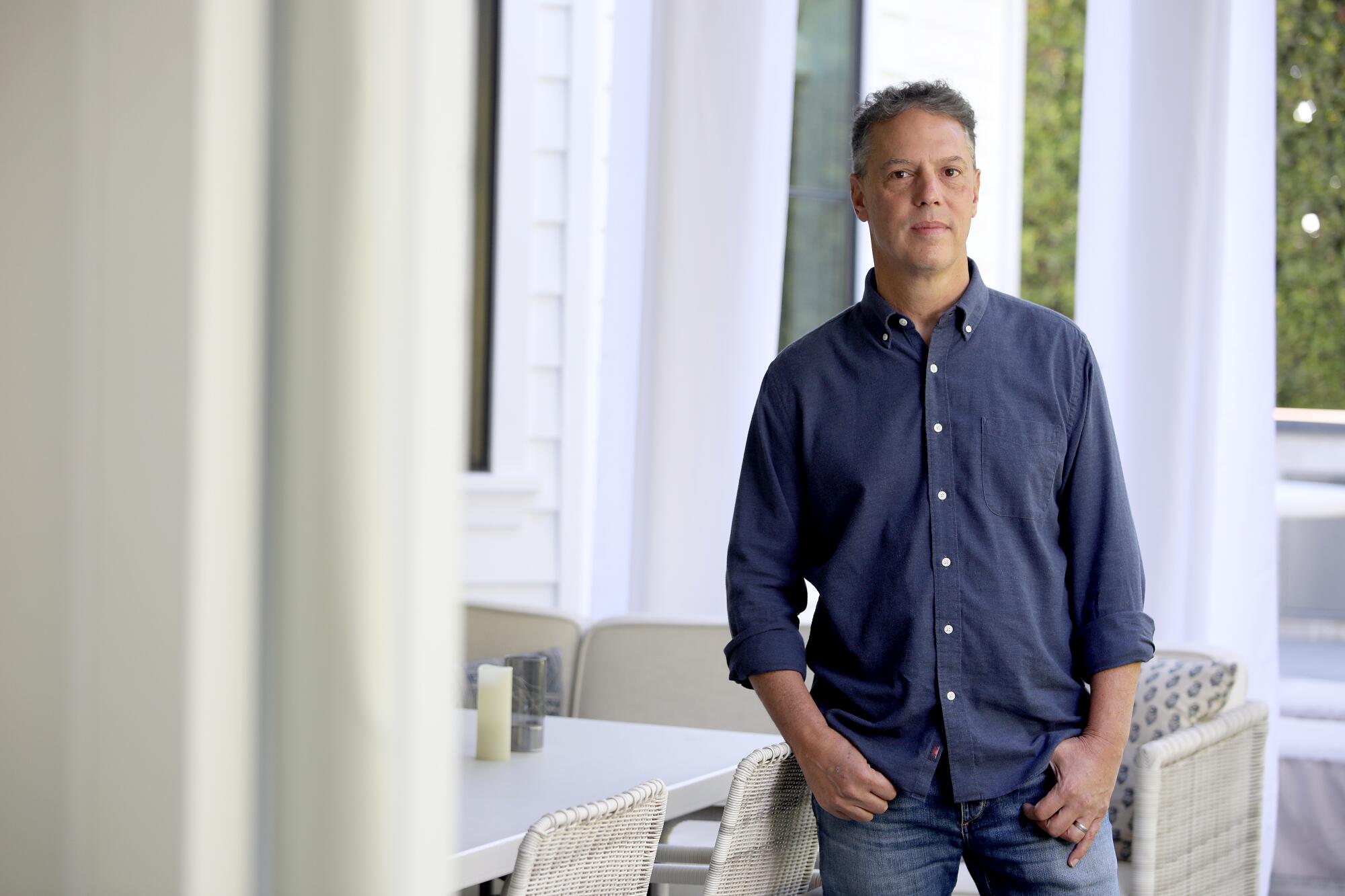
Miller sold Cornerstone in 2021 for $5.2 billion. While pursuing new business interests, he also devotes more of his time to 1P.org — an enterprise that includes the foundation and separate entities for research, advocacy and social impact investing — which Staci Miller heads as chief executive.
Most of its work to date has been focused nationally on gun safety, supporting research seeking common ground between gun owners and gun control advocates.
The micro-loan fund is his local initiative focused, naturally, on the intractable problem of Los Angeles — homelessness.
A developer working to preserve affordable rentals in South L.A. and build housing for homeless people has won praise from the likes of Oprah Winfrey and Mayor Eric Garcetti, who see his work as an important step in dealing with the city’s housing crisis. But the entrepreneur’s efforts are also facing criticism from tenant advocates. A look inside SoLa Impact.
After surveying the landscape of existing homeless initiatives, the Millers concluded that they could have the most impact by helping people to hang on to their housing.
The need couldn’t be clearer. Even as city and county outreach succeeded in moving tens of thousands of people from the streets into housing over the past five years, the number of people on the street continued to climb as new people lost housing.
Even so, city and county efforts to prevent homelessness have been limited. Less than 4% of the sales tax revenue from Measure H goes into prevention programs. A confounding question is whom to target: Hundreds of thousands of Angelenos live under extreme rent pressure but only a tiny percentage become homeless.
Various strategies are being tested as solutions. They range from the Los Angeles County Board of Supervisors pilot program to supplement poor people’s incomes to a UCLA research project analyzing data from county social services agencies to predict who are most likely lose their homes.
The Millers decided to focus their intervention narrowly on people who face imminent eviction because of a crisis but have the means to pay their rent going forward.
Initially, they put $1 million into a revolving loan fund and built a bare-bones staff to administer it. Staci Miller, who had a research background with entertainment companies and nonprofits, is the unpaid executive director.

Their one employee was Rickey Robinson, formerly an outreach worker with Venice-based Safe Place for Youth. In June of 2021, Robinson launched a pilot in South Los Angeles, letting homeless and housing agencies know that loans were available.
His first clients were four tenants referred by SoLa Impact, a South Los Angeles real estate investment and development company that owns about 200 buildings and is building thousands of units of affordable housing.
Among them, Bailey was pregnant and on leave without pay from a new job with the post office. Bailey received an eviction notice after her COVID rent relief payment came late. She had a new apartment lined up with SoLa. But she had no cash for the move-in fees, and the apartment was going to go to someone else.
Her $500 loan opened the door to what she calls “a forever home for me and my family.”
For Stacie Charles, a $2,500 loan this month paid the back rent on her apartment in South Los Angeles. A series of events — her car breaking down, a daughter graduating from high school, a granddaughter being born — piled onto the cost of inflation.
“Everything was just going crazy,” she said. “Groceries are high. Gas is high. The electrical bills. It’s just hard to keep up with all of this.”
Her landlord was understanding, but losing patience.
“I have been negotiating with her and trying to give her what I could,” Charles said.
Now that she’s caught up, her salary as a clerk is back in balance with her budget.
More homes are overcrowded in L.A. than in any other large U.S. county, a Times analysis of census data found — a situation that has endured for three decades.
In all, about 43 loans have been made in the pilot.
The program is now open to all residents of Los Angeles County who meet three basic criteria: They must have income below 50% of the area median, have had a recent financial shock and be facing imminent eviction as a result.
Applications can be submitted on the STEP Fund website. If applications ever exceed the capacity of the fund, preference will be given to those who have income below 30% of the median, have been homeless in the past or were in the foster system.
Currently, though, no one who qualifies will be turned away, Staci Miller, said. Despite the evident need, the program has taken off slowly, partly as a result of eviction moratoriums and government relief during the pandemic.
“The complexity around the rental market and COVID has complicated things,” Miller said. “We’ve seen peaks and valleys as different things have changed. I do expect that toward the end of the year demand will increase.”

One of the main impediments is that applicants must show income exceeding monthly expenses, leaving many ineligible, Robinson said. Even though there is no penalty for those who default, the goal of the program is to recover the money so it can be lent again. Applicants who cannot possibly pay the money back are ineligible.
“The No. 1 reason is their net income is in the negative,” Robinson said. “We don’t want to put anyone in debt. That has been kind of the struggle.”
For those who do qualify, the repayment is flexible. No payments are required for 60 days and then the balance is spread over 36 months. But the software is designed to accept any payment.
“If someone pays $20, we are happy to take the $20 because the intention of getting into that habit of repayment is important,” Staci Miller said.
Starting out, the Millers planned on a repayment rate of about 70%, far below that of a conventional loan program.
In practice, it has not turned out that high, but Staci Miller said she does not consider the percentage so far to be representative because the rate has been improving as they learn from experience.
The Millers said they hope their experiment will help government and large nonprofits design prevention programs, but they’ll wait for the results of the Notre Dame study to make recommendations. Rob Collinson, assistant professor in Notre Dame’s Wilson Sheehan Lab for Economic Opportunities said he will need a sample size of about 500 loans to draw more far-reaching conclusions.
“The results could show that these small loans are effective at keeping people from losing their housing, but it could show that the repayment rate is so low these don’t make sense as loans,” Staci Miller said. “They may make sense as grants.”
More to Read
Sign up for Essential California
The most important California stories and recommendations in your inbox every morning.
You may occasionally receive promotional content from the Los Angeles Times.

